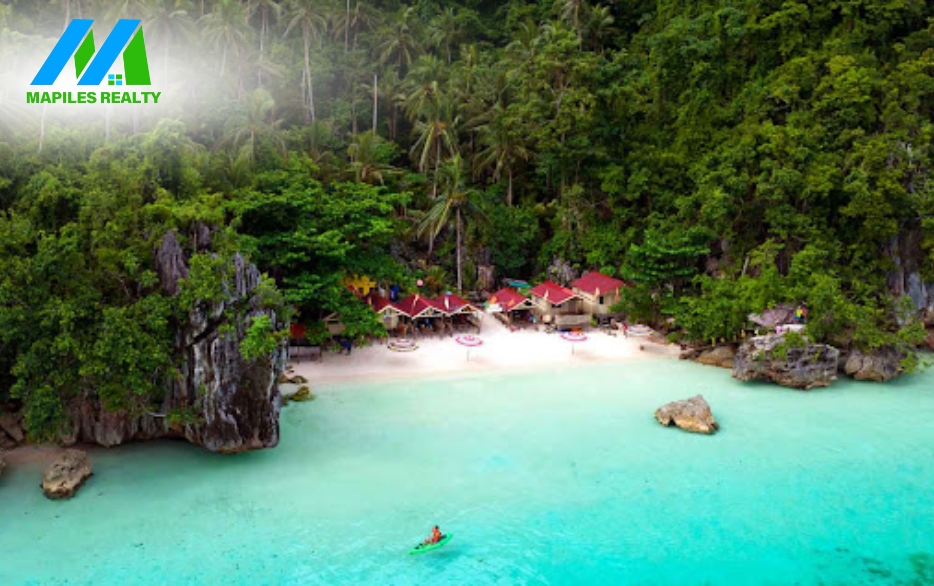Caraga’s Hidden Gem
Economic Strengths
- Fishing and aquaculture
- Tourism (beaches, islands, diving)
- Agriculture (coconuts, rice)
- Mining (chromium, nickel)
Demographic Advantages
- Young population (32.78% aged 14 and below)
- Growing workforce (60.10% aged 15-64)
- Median age: 24
Key Attractions
- Dinagat Island (beaches, coves)
- Leyte Gulf (fishing, diving)
- Surigao Strait (scenic views)
- Mount Redondo (hiking)
Opportunities
- Infrastructure development (ports, roads)
- Eco-tourism expansion
- Agricultural modernization
- Mining investments
Challenges
- Remote terrain
- Poverty reduction
- Environmental conservation
- Disaster resilience
Why Invest in Dinagat Islands?
Dinagat Islands offers:
- Strategic location (Caraga region)
- Natural resources
- Resilient community
- Government support
- Growing infrastructure
| Name | City/ Municipality | Population (2020) | Population (2015) | Annual Population Growth Rate (2015‑2020) | Area (km2) | Density (2020), per km2 | Brgy count |
|---|---|---|---|---|---|---|---|
| Basilisa | municipality | 36,911 | 36,880 | 0.02% | 102.46 | 360 | 27 |
| Cagdianao | municipality | 18,350 | 16,808 | 1.87% | 196.57 | 93 | 14 |
| Dinagat | municipality | 10,621 | 10,632 | -0.02% | 21.36 | 497 | 12 |
| Libjo | municipality | 18,051 | 17,760 | 0.34% | 180.57 | 100 | 16 |
| Loreto | municipality | 9,690 | 9,309 | 0.85% | 155.82 | 62 | 10 |
| San Jose | municipality, capital | 26,375 | 27,487 | -0.87% | 34.31 | 769 | 12 |
| Tubajon | municipality | 8,119 | 8,276 | -0.40% | 126.38 | 64 | 9 |
| Dinagat Islands Total | 128,117 | 127,152 | 0.16% | 817.47 | 157 | 100 | |
Economy
| Fiscal Year | Annual Regular Income | Change |
|---|---|---|
| 2009 | 278,306,784.91 | – |
| 2010 | 294,708,902.42 | 5.89% |
| 2011 | 6,042,070.69 | -97.95% |
| 2012 | 23,625,001.70 | 291.01% |
| 2013 | 358,830,704.81 | 1,418.86% |
| 2014 | 444,939,774.99 | 24.00% |
| 2015 | 497,564,951.38 | 11.83% |
| 2016 | 536,638,621.55 | 7.85% |
| End notes:Annual Regular Income = Locally Sourced Revenue + Internal Revenue Allotment (IRA) Current Year + Other Shares from National Tax CollectionLocally Sourced Revenue = Real Property Tax (General Fund) + Tax on Business + Other Taxes + Regulatory Fees + Service/User Charges + Receipts from Economic Enterprises | ||
Tourism
Dinagat Islands, often overlooked by tourists, holds the promise of eco-tourism wonders. Its pristine landscapes, rich marine life, and cultural festivals offer unique attractions for travelers seeking untouched natural beauty.
Visitors to Dinagat Islands can explore its untouched forests, indulge in local island cuisine, and immerse themselves in cultural festivities. The province’s potential as an eco-tourism destination is an exciting discovery for those looking to experience paradise in its most natural form.





